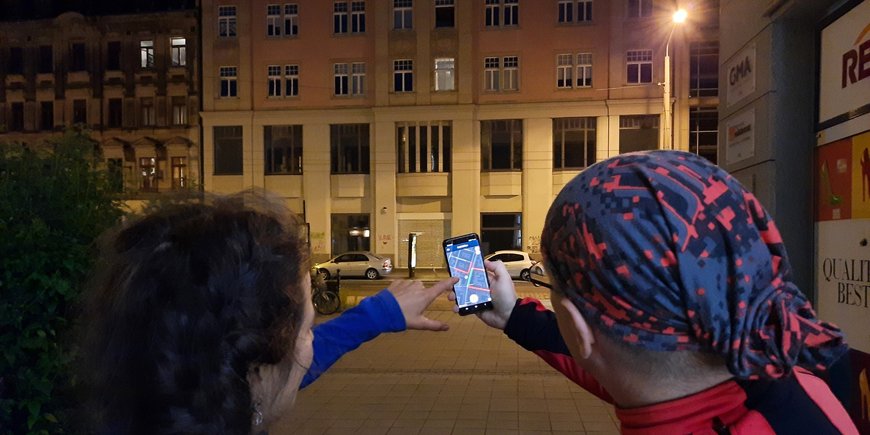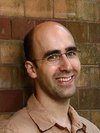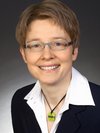Researchers from the Ruhr-Universität Bochum and the GFZ are looking for interested people who want to work as Citizen Scientists in September and October and record the light use in their environment via app and thus participate in the research project Nachtlicht-BüHNE.
Most of us turn off the light in our rooms before we go to bed, but what about the lights outside of our houses? That’s a question that researchers at Ruhr University Bochum and the German Research Centre for Geosciences GFZ are examining this September and October, and they’re asking the public to help. Citizen scientists will gather the data for this project using the “Nachtlichter” (Nightlights) app. The project aims to measure what fraction of different types of lights turn off late at night, and at what time. “This is useful for scientists, because the only worldwide satellite images of Earth are taken very late at night, and don’t provide an accurate picture of the early evening”, says Dr. Christopher Kyba, the project lead from the Interdisciplinary Geographic Information Sciences group at Ruhr University Bochum and GFZ-Section 1.4 Remote Sensing and Geoinformatics.
Interested parties can find all the information they need on the project website: https://nachtlicht-buehne.de/nightlights
Providing data to make lighting more effective
“We gained a better understanding of the connection between the amount of lights on the ground and the brightness measured by satellites thanks to a Nachtlichter campaign in 2021”, says Christopher Kyba. “What we don’t know yet is which lights turn off, and when”.
The organizing team of academic and citizen scientists is asking participants to count lights on the streets where they live, and also on streets with commercial businesses. Participants walk slowly from one street corner to the next, tallying up the numbers and types of lights they see with the Nachtlichter app. The team isn’t interested only in street lights, but every outdoor light, including signs, windows, lit facades and other types of lights. Before taking part, participants must complete an online tutorial to ensure consistency in the counting and categorization of lights. In this year’s “Time for the Night” campaign, the team will study lighting change by counting lights at two or more different times at night, with at least one hour between the measurements. The difference in numbers between the two counts reveals which lights were turned off.
Engaging citizens in light use in their surrounding
This is not the first time the Nachtlichter app has been used to survey lights. During 2021, more than 200 citizen scientists counted and classified almost a quarter of a million artificial light sources in about 4500 surveys in Germany and worldwide. The project team aims to observe the same number of surveys again in 2023, but this time on a smaller number of individual streets.
Sicco Bauer is a citizen scientist who has been involved in the project since its start, and was originally motivated to take part based on his experience as an amateur astronomer: “Once I got engaged in this topic, I learned that light pollution has impacts beyond astronomy. For example, it affects the environment when it shines on plants and animals”. Bauer co-organized a large Nachtlichter campaign in Dresden in 2021, and will do so again this year.
In addition to the shift of focus to the time of night, a new aspect of the data collection this year is measuring how many people are present on the street at the time of the survey. The organizers hope that the collection of this data may help cities and businesses use lighting more efficiently, by better matching the times that lights are on with peak periods of activity.
“Citizen science is a powerful tool, because as researchers, we can’t be everywhere” says Christopher Kyba. He invites everyone interested to go out on the street and count lights, and emphasizes that every additional survey provides useful data for understanding the use of light.
Funding
The Nachtlichter project is part of a larger project called Nachtlicht-Bühne, financed as part of Science Year 2023 – Our Universe – by the Federan Ministry of Education and Research.
(Edited press release of the Ruhr Universität Bochum)
More information about the app and the project:
https://nachtlicht-buehne.de/nightlights










![[Translate to English:] Torsten Sachs in front of a climate station on a field](/fileadmin/_processed_/3/9/csm__TorstenSachs_bearbeitet_GS_4a1365ef84.jpeg)

![[Translate to English:] left image flood at the Ahrtal: image from above, several houses are flooded; left image:: Heidi Kreibich;](/fileadmin/_processed_/4/4/csm_Bild2_9af0130e9f.png)



![[Translate to English:] Start der Vega Rakete](/fileadmin/_processed_/6/4/csm_20231201-kachel_Vega-VV23-launch_ESA-CNES-Arianespace_706716b68c.jpeg)









![[Translate to English:] Poster exhibition at the Brandenburg Hydrogen Day at the GFZ, some participants in the foreground](/fileadmin/_processed_/6/5/csm_Erster_Brandenburgischer_Wasserstofftag_GFZ_402fcec95e.jpeg)
![[Translate to English:] Group picture of the participants](/fileadmin/_processed_/9/4/csm_20231108_CAWa-Workshop-Tashkent_Gruppenbild_99ea779d8a.jpeg)

![[Translate to English:] [Translate to English:] Hörsaal](/fileadmin/_processed_/e/6/csm_H%C3%B6rsal_e21ac645fb.jpeg)


![[Translate to English:] The Delegations in the Historic Library on the Telegrafenberg. In the back there are from left to right, the Dutch Ambassador for Germany, Ronald van Roeden, the Dutch Minister for Education, Culture and Science, Robbert Dijkgraaf and the scientific director of the GFZ, Susanne Buiter.](/fileadmin/_processed_/d/b/csm_Kachel-2_9eba4b4212.jpeg)

